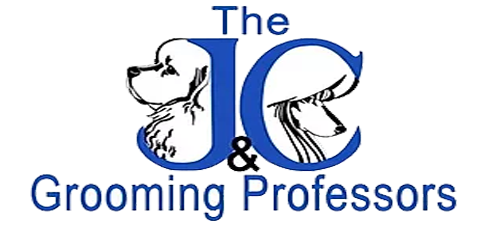When I worked with Oster, I learned to use plastic guide combs over my size #30 or #40 blades. They did all the same things as a metal guide comb, but they were not as smooth through the coat, they would wear out in the groove where the blade fit and grab coat. I also had to go over the clipped area more times to get the same look as the metal comb attachments. The bottom line, metal comb attachments are a game changer for pet groomers. They help us save so much time and they also make your work more consistent. With the longer lengths metal comb attachments come in and now wide blades with metal wide comb attachments it just keeps getting better and better.
Tips on how to use metal clipper comb attachments:
- When you use comb attachments you need to make sure the dogs coat is clean, rinsed and perfectly brushed out to get the best finish fastest. Sometimes a nice finishing spray can help condition the coat so the attachments guide through the hair even better.
- Another key component to using comb attachments is you need to remove the dead under coat from the dog you are grooming. If there is any excess dead coat left behind it does not allow the attachment to feed through smoothly. The fact is dead hair is normally what snags between the blade and comb attachment.
- Using a sharp blade under the attachment and you must make sure your blade lock on your clipper is working. If not the blade and comb will pop off.
- Completely brush out before using an attachment. If a grey hound comb goes through the coat smoothly you are normally good to go. If it does not go through easily, mist the coat with a finishing spray and use a very course under-coat rake over the area. Yes, even on poodles and especially on doodles. I find the comb attachment will go through the coat easily if a grey hound comb goes through smoothly.
- Another key factor for a clean cutting comb attachment is not only a sharp blade but use the right size blade under the attachment. You cannot use a #40 blade. The way the #40 blade lines up with the metal comb attachments teeth cause the teeth to break out of your blade. So, use a #9, #10, #15 or my favorite the #30 blade under the metal comb attachments.
- When you feel the guide dragging or catching coat between the blade and comb attachment and you have removed all the under coat and it is not a dull blade or a worn out or broken attachment. It could be your clippers blade drive. When the blade drive is worn the cutter is not pushed as far back and forth and does not slide as far across the teeth making it drag or even leave track marks compared to a new drive lever. I find the wear is more noticeable when using the comb attachments verses using only a blade. So, break it down to find out why the comb attachment is snagging.
- Another great tip that I use for many breeds with straight flat laying coat type is to use your comb attachments reverse first. Start by taking a comb attachment a size or two longer then the desired length you planned on when clipping with the lay of coat and go reverse. This prevents you from having to comb the coat up multiple times to achieve a great finish. Remember to mist the coat with a finishing spray or water then comb up against the lay, before you make your second pass with the shorter blade or comb attachment. I typically only go over the dog twice using this method. The finish is normally very clean and natural looking.
- A tip on a #4F blade Teddy Bear trim with comb attachments on the legs. I would use a 5/8-inch or 1/2-inch comb attachment reverse/against the lay of coat the first time over the body coat and use a #4f blade with the lay of coat to clean it up the second time. It is fast and leaves a clean even finish that lasts.
- One more tip when using attachments on the dog’s legs. Go reverse over them before you clip the body. Then when taking your final pass over the body with the lay of coat make sure you have the body and leg coat combed up. This gives you a great chance to blend the coat between the body and leg lengths and again a quicker finish.
- Another favorite trick I like to use on the topknot of a pet poodle trim. Start with a 2-inch comb attachment over a perfectly brushed out topknot. I normally blend all the way down the neck only going with the lay of coat. Make sure the muzzle is parallel to the ground when doing it. Then scissor your topknot as usual. Speeds things up a lot.
If you are not using the metal comb attachments, you need to try them.
Practice makes perfect,
Chris Pawlosky
